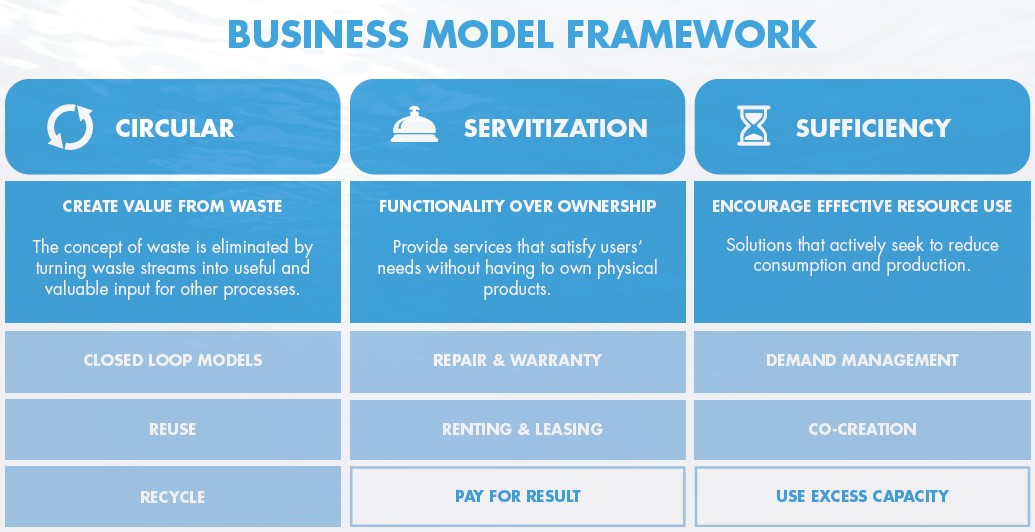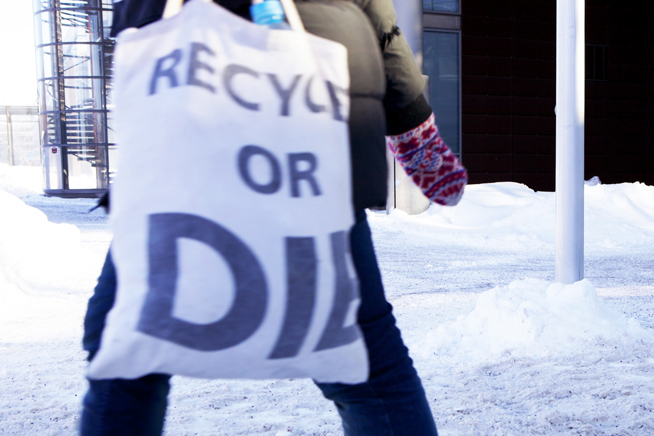The piles of clothes we have are beyond reasonable. Closets bursting at the seams and heaps spilling out of wire baskets are indicative of domestic toxic waste. Clothes that are slightly torn, that await the owner’s next diet or cannot be co-ordinated with other outfits can be returned to circulation by using circular economy services. In light of this, Sitra has been exploring the current selection of services for textiles.
In a circular economy products circulate – they are maintained and repaired, and the time before they become waste is actively prolonged. The longer a product stays in use, the longer the effort and energy used to produce it will continue to provide value. Textile waste is especially troublesome, because its large-scale recycling is difficult. The processing of textile waste requires considerable manual labour, which can make recycling commercially unviable. Because of this it is especially important to try to delay the creation of, or avoid altogether, textile waste.
Clothing rentals, repair services and flea markets are at the core of the circular economy because they prolong the life of a piece of clothing. New versions of these traditional services have been created and fresh business models also exist, as discussed in the recent study initiated by Sitra.
The study was conducted by the Dutch organisation Circle Economy. They began by compiling an international database of approximately 250 textile companies that, in various ways, implement a circular economy in practice. The categorisation of new business models in the textile industry, shown below, was created through studying these companies. The business models included in the database were also evaluated using criteria such as their economic, ecological and social sustainability, innovativeness and suitability for Finland. The companies ranked highest were used as examples. Ten of these deep-dive cases are described in detail in the report and each deep dive is accompanied by a few comparative cases.

The columns in the framework are the three major categories of business models: circular, servitization and sufficiency. Each main category contains three more detailed business models; for example, within the circular category there are closed-loop, reuse and recycle models.
In the circular category business is created by improving the circulation of products or raw materials. Deep dives include Filippa K, which takes back its own branded products from consumers and sells them in its second-hand store in Stockholm.
The servitization model emphasises services such as repairing, renting and paying for results, instead of focusing on selling new, physical products. Deep dives include Vigga, a Danish subscription service that delivers clothing for babies and toddlers for 50 euros per month.
In the sufficiency category the target is the wise utilisation of existing resources. In the textile industry, the minimisation of unsold inventory through various means is especially important in this regard. For example, YR enables the bespoke printing of customised shirt designs. The company does not produce unnecessary shirts that might later end up being incinerated. Furthermore, shirts designed by the buyers themselves most likely will see more use and have longer lives than basic t-shirts.
The textile industry has traditionally employed practices that are circular in nature. New, interesting ideas are also being tried out. These winds of change can be beneficial both for current and new companies in the industry and, first and foremost, for consumers. Key lessons can also be learned by other industries!
Read more on the study Service-based Business Models & Circular Strategies for Textiles.




Recommended